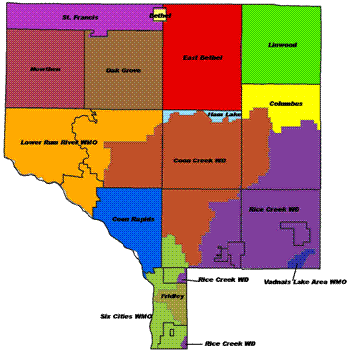
Wetlands are regulated under the Minnesota Wetland Conservation Act of 1991, with the purpose of maintaining and protecting Minnesota's wetlands and their benefits. Local government units such as cities, watershed management organizations, and townships implement the act locally.
The WCA requires anyone proposing to fill, drain, or excavate a wetland to first try to avoid disturbing the wetland; second, to try to minimize any impact on the wetland; and, finally, to replace any lost wetland.
The three main definitions that landowners need to know pertaining to the State of Minnesota Wetland Conservation Act on Agricultural and Non-Agricultural lands are Fill, Drainage, and Excavation.
• Fill means any solid material added to or re-deposited in a wetland that would alter its cross-section or hydrological characteristics, obstruct flow patterns, change the wetland boundary, or convert the wetland to a non-wetland.
• Drainage means any method for removing or diverting waters from wetlands.
• Excavation means the displacement or removal of substrate, sediment of other materials by any method.
Wetland Benefits:
Wetlands are protected because they provide many benefits to society.
• Water quality; wetlands filter pollutants and nutrients out of surface water that would otherwise pollute our lakes, rivers and groundwater.
• Flood control; wetlands store a great deal of water reducing the potential for flooding in the watershed. This storage also recharges our groundwater supplies
• Public recreation and education; wetlands provide hunting, fishing areas, wildlife viewing, and other open space natural areas.
• Commercial benefits; wetlands provide vegetable farming, peat mining and other specialty crops, such as Wildrice and cranberry.
• Fish and wildlife habitats; wetlands provide a great deal of food along with permanent and seasonal homes for a variety of wildlife.
• Low-flow augmentation; during times of drought wetlands provide our lakes and rivers with water, and replenish our groundwater